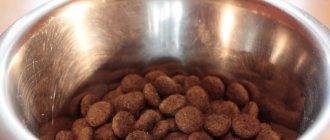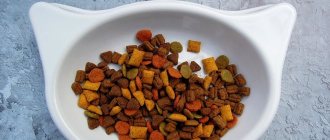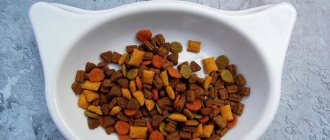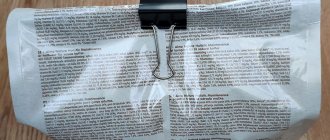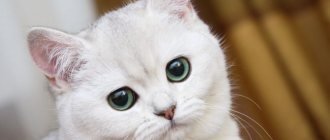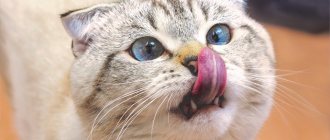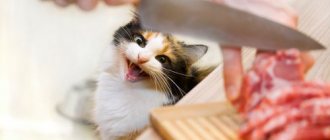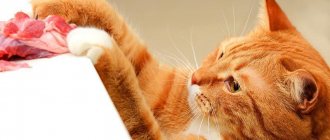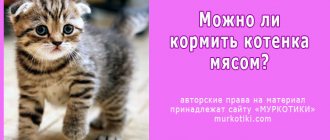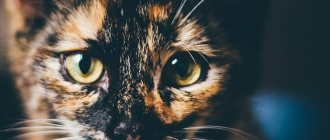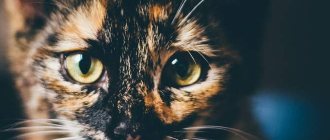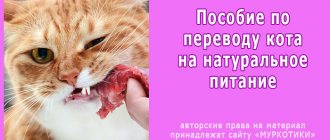- Kittens
- Physical activity
We are made of what we eat, and our furry flatmates are no exception. A real owner is simply obliged to take care of the correct menu for his pet: a balanced diet determines the appearance, vigor and health! It is necessary to feed cats and cats with a variety of dishes - then there is no imbalance or lack of individual biologically active elements. Animal, fish and bird proteins certainly alternate - just like in humans.
Ready-made food for cats allows you to simplify the process: the compressed grains contain all the components necessary for mustachioed and striped organisms. Using a convenient format does not come without subtleties. In order for the skin to shine, the eyes to glow, and a satisfied expression to remain on the faces, it is worth understanding the dosage and the hunger-satiety cycles.
Is it necessary to follow the rules for feeding cats dry food?
On each bag of dry food, the manufacturer clearly indicates how much of the mixture is enough to satisfy cats of different ages and weights. The dosage is conditional, but it is still advisable to comply with it, since rickets develops in underfed animals, especially at a young age. Pets that receive more than the daily allowance suffer from obesity. But everything is individual.
Every second owner doesn’t know how to determine whether a pet is overfed or underfed
Note! If your cat likes the food, smells good, and is tasty, she will ask for it all the time.
In order not to deviate from the amount recommended on the package, it is necessary to set the feeding time and frequency. This will also help to calculate the amount of feed for a specific animal per day. So, if a cat is fed only 1-2 times a day for 1-2 weeks, allowing him to consume no more than the norm for age and weight, then after the specified time it will be possible to experimentally understand how much food he really needs. It is recommended to weigh your pet at the end of each week.
Estimated dose:
- reduce if there is food left in the bowl after each feeding;
- increase if the animal has noticeably lost weight.
Note! The norm indicated on the package allows you to calculate only the approximate amount of food. If the cat is large and weighs a lot due to its breed characteristics, then it will have to be fed more often and more.
How to measure food correctly?
When you have calculated how many grams of food a kitten needs, one more question remains: how to accurately measure the right amount? The easiest way is to use a measuring container that is designed for these products. You should not use cups from dry food of other brands for measurements. This is due to the fact that the density and size of the granules are not the same for different brands, which means that the error can be very large.
If there is no cup, but there are electronic scales in the kitchen, weigh the food on them and select a container of the appropriate size. However, with a small kitten this option may be inconvenient, since the feeding rate must be constantly adjusted. A transparent plastic cup and a permanent marker will help: weigh 10 g on the scale, pour the granules into a glass and make a horizontal mark on it, then another 10 and so on. You will get a universal measuring container that will remain relevant even when your pet grows up.
What to do if there is neither a special glass nor scales? When the packaging is small, the food can be easily divided into equal parts. For example, we divide 340 grams into 10 parts and get a portion equal to 34 grams. But when buying a large bag of product, this method of measurement will be too troublesome and inaccurate. Therefore, if you don’t have kitchen scales in your home, we recommend purchasing them. They will be very useful to you not only in feeding your pet, but also in the household in general.
Feeding frequency
The cat takes a break for breakfast, lunch and dinner as often as he is allowed:
- age;
- breed;
- weight;
- health status.
How much dry food to give a dog per day: table
Kittens under 6 months of age are fed dry food 3-4 times a day. At the same time, the cat feeds the babies while they are still very young; they begin giving artificial formula at 2 months. Portions should be small but nutritious; food is chosen taking into account age.
Six-month-old and one-year-old animals are fed 2-3 times a day, and adult cats and cats 1-2 times a day. Typically, the older a cat gets, the less she eats. This is due to changes occurring in the body. The metabolism of older animals slows down, and the gums and teeth cannot process food as intensively as before.
Important! Veterinarians advise feeding cats over 7 years old no more than once a day.
How much does a cat weigh?
If such an opportunity is not expected in the near future, the cat can be weighed at home on ordinary household scales. The difficulty is that most animals do not understand the importance of this procedure and strive to escape even before the treasured numbers are displayed on the board. To make the task easier, you can weigh the fidget in a cat house or box, and then subtract the “package” mass from the total mass.
It’s even easier to pick up your pet and step on the scale with him, and then subtract your weight from the resulting indicator. The error with this method of measurement will be no more than 100 grams, and you can easily figure out how much dry food your cat needs to maintain its current shape.
Feed intake depending on age and activity level: table
The amount of food an animal consumes is related to its age and activity level. So, if a cat is active and young, then he spends a lot of energy. It should be replenished by increasing the calculated amount of feed assigned to him by age. More data in the table:
How many times a day should you feed a domestic cat?
| Age, month | Active, g | Not active (lazy), g |
| 3-6 | 50-70 | 100-110 |
| 6-12 | 200 | 250-300 |
| From 12 | 200 | 250-300 |
The amount of feed also depends on the weight of the animal.
So, a cat that weighs up to 2 kg consumes an average of 25-40 g of food per day. A cat weighing up to 4 kg can eat approximately 55-80 g of food. A pet whose weight exceeds 8 kg consumes up to 140 g of dry mixture per day. Note! To calculate the amount of food for 1 adult cat, add 10-15, or even 20 g of food for every 1 kg of weight. So, if a pet weighing 2 kg or more is given 25 g of food, then a cat weighing 3 kg is given 40 g, a cat weighing 4 kg is given 55 g, and a cat weighing 5 kg is given at least 65-70 g of food.
Nutrition standards for animals
How much wet food does a cat need per day: table
Walking dogs: how many times a day should you walk by time?
The amount of wet or natural food is calculated based on the cat's weight. A pet should not eat more than 7-7.5% of its weight per day. Age and health status are also taken into account.
| Age, weight | G |
| Kittens up to 6 months | 50-150 |
| One year old cats | 150-200 |
| Adult animals up to 4 kg | 300 |
| Animal over 7 years old | 200 |
Features of feeding pregnant cats
The amount of food consumed for pregnant cats is calculated in a special way. During this period, the animal needs additional sources of vitamins and minerals. Not knowing exactly how much a cat should eat and what to feed it, they turn to the veterinarian. But in most cases, she is fed natural food or premium and super premium food (Royal Canin, Perfect, etc.). When choosing food, take into account the presence of products containing:
- proteins;
- vitamins;
- minerals.
Already in the second week of pregnancy, the animal begins to consume approximately 10-15% more feed than usual. There is no need to limit the cat. Starting from the 3rd week of pregnancy, the cat is given 50% more than the usual amount of food. So, if she received 250 g, then during pregnancy she is fed an additional 125 g daily.
Your pet is in dire need of:
- calcium. If there is not enough of it, the kittens will develop poorly, will be born weak, and the cat herself will begin to have problems with her teeth;
- vitamin A. Its lack leads to a decrease in visual acuity, the quality of the coat also deteriorates;
- animal proteins. Without this component, the harmonious development of kittens is impossible;
- vitamin E. Accelerates cell regeneration, is responsible for the condition of the reproductive system, helps to recover after childbirth;
- vitamin K. The lack of this element has a negative effect during childbirth; animals begin bleeding, which cannot be stopped without medication;
- fiber. The cat's intestines begin to work better. This is extremely important during pregnancy.
Important! Shortly before giving birth, a cat may even refuse its favorite food, this is normal. Trying to force feed an animal beyond the norm (plan) is not worth it. It is impossible to change a cat’s diet while bearing kittens, for example, by switching from Kanin to Kitekat food. If this needs to be done, consult a veterinarian.
How to tell if your pet is not hungry
Daily regime
Feeding babies is a hassle: anxiety every four hours. Gradually the frequency is reduced. The ideal number for a mature and sedate audience is two.
When leaving the poor thing at home alone for a long time, it is ideal to count out food with a reserve (+ 10 - 15%) and leave a full bowl of water.
Kittens
The dry food limit for kittens under 2 months is from 25 to 40 grams in six doses. The next quarter, showing a claim to independence for naughty people - from 50 to 110 grams four times. During the period of intensive development for the next 3 months, the entire twenty-four-hour volume, from 65 to 120 grams, is divided into three parts.
Adults and young people
Fully formed March screamers are able to get by on two meals a day, corresponding to the above values.
The passing of years slows down the metabolic rate: intense in young people, and vice versa in older people. Meowing pensioners are given food more often, purchasing soft mixtures with a high proportion of fiber. Provisions based on dehydrated food for less massive kitchen regulars who are older and weigh up to 6 kg are reduced by 10 - 15%.
Normal for a neutered cat
Neutered cats consume less food and need fewer calories. Castration affects hormonal levels, which affects the character of the animal. It becomes calmer and less active, accordingly, it sleeps more and eats more. Often, pets who are decided to be sterilized are diagnosed with obesity. To prevent this, and also to protect the pet from the development of urolithiasis, cats are fed premium and super premium food at the rate recommended by the manufacturer and the veterinarian, who knows exactly how much a cat should eat.
To saturate an adult animal, 150–200 g of feed per day is sufficient. If the animal shows signs of obesity, the portion is reduced by 50-70 g, excluding additional feeding and distribution of goodies.
Note! After castration, cats are not recommended to be given foods rich in phosphorus and magnesium, which means they are prohibited from consuming fish and other foods containing these elements. This also applies to dry food, the packaging of which contains an indication of the presence of fish.
How much food to give a purebred cat
Individual approach
When deciding how many grams of dry food to give your kitten, remember that each animal is unique. Perhaps your pet will not be able to handle the entire recommended dose or, on the contrary, will beg for supplements. Here it is important to be guided not by emotions, but by objective data. If the baby is cheerful and active, gains weight normally, and has regular and well-formed stools, then he is eating normally and there is nothing to worry about. If you have any doubts about the correct feeding of your kitten, you should contact a veterinarian.
How to tell if your cat has enough food
A cat that is fed up with food will never lick the bowl or ask for more. You can understand that your pet has enough food based on other signs:
- the animal's fur is smooth and shiny;
- the animal behaves as usual, showing neither apathy nor aggression;
- the eyes are clean, tears and unpleasant-looking smudges do not collect in the corners;
- the animal eats well;
- The cat often empties its intestines, it does not have constipation or flatulence.
A well-fed animal actively participates in games and does not try to steal even the most unappetizing pieces from the table.
If the quality or quantity of food is in doubt, the cat needs to be squeezed, checking whether its ribs are protruding, how sharp the ridge is, and whether it sticks out from under the skin.
Important! The absence of obvious signs of exhaustion and the simultaneous absence of any diseases in the cat indicates that the animal is satiated, has enough food and should not be fed more than the daily norm of food for cats by weight, age and breed.
Why does one food seem tasty, while another doesn’t excite your pet’s admiration?
How to tell if your cat doesn't have enough food
If a pet does not have enough food, it behaves restlessly, regularly checks the bowl, and changes in appearance. Thus, malnourished cats, especially those who are nursing kittens, change their appearance dramatically and very quickly. Their ribs begin to protrude, their spine becomes visible, and even a significant amount of fur does not hide their thinness. In an emaciated cat whose nutrition is not organized correctly:
- there is lethargy in all movements;
- signs of vitamin deficiency appear - watery eyes, inflammation of the mucous membranes, dandruff, hair loss;
- the figure takes on an hourglass shape;
- The fat layer on the ribs disappears.
For your information! A 10% loss of previous body weight is already considered critical. A pet that does not receive the amount of food it needs may get sick.
If the owner cannot decide on his own whether the cat is skinny or not, it is better to take the animal to the veterinarian and consult with a specialist about its further diet.
It is useful to create a menu for the day, and if the cat eats exclusively dry food, then you need to weigh it before each feeding. This will help resolve the issue of how many spiders to give a cat per day, and gain confidence that the pet is really getting enough nutrition and has enough of everything.
When an animal is hungry, it constantly begs for food.
Constant access to food – is it possible or not?
Sometimes, due to the nature of the working day, pet owners cannot afford to feed them strictly according to the hour. The solution is found in the constant presence of food in the bowl throughout the day. Is it possible to do this or not? It is possible, but this method of feeding is only suitable for mentally balanced cats that do not have a tendency to overeat.
Having the unhindered opportunity to approach a plate of food at any time, it can be tempting to eat constantly until the dishes are empty, rather than as needed.
Only dry food is suitable for this feeding method :
- If Murka has an adequate appetite, you can pour in the entire daily portion of food at once in the morning and calmly leave the house.
- If you still have a tendency to overeat, take half the portion in the morning and the second half in the evening.
- If the owner leaves in the morning and does not know exactly when he will return, then 2/3 of the daily portion of food is immediately poured, and the remaining 1/3 is added in the evening.
This will not work with wet food, because... You can’t leave it in a cup for a long time because of the risks of rapid spoilage and indigestion later when eating it after some time.
This method of feeding is absolutely not suitable for kittens ! Kids are completely unaware of moderation and will eat as much as there is food on their plate. This is fraught with overeating with all the ensuing consequences (indigestion, constipation, flatulence).
What determines a cat's appetite?
Cats are picky eaters. Most animals living in a house and eating a certain type of food refuse new treats, stubbornly following their habit. Some are so stubborn that they don’t eat for 3-4 days or even a week. At the same time, this does not affect the well-being of a well-fed cat, but the owners feel extremely uncomfortable, since all this time the pet demands the treat it likes. A cat's appetite largely depends on:
- the smell of food. Knowing this, many manufacturers of economy-class food flavor them with a large amount of flavoring substances. For this reason, a cat will prefer cheap Whiskas to expensive premium food (Perfect, Proplan, Purina);
- room air temperature. In summer, animals drink more water and eat less. This is normal and is not considered a deviation or a sign of any disease;
- feeding areas. The cat's bowl should remain in one place the entire time the pet lives in the house. Constantly moving the bowl from the kitchen to the room and back causes discomfort to the animal and negatively affects its appetite;
- cleanliness of the bowl. Cats are clean. A bowl in which leftover food sours and rots causes them to have an aversion to food. An animal is capable of refusing food if little attention is paid to the cleanliness of the dishes in which it is placed;
- start of heat. If a female cat is approaching heat, this will affect her appetite. Animals stop eating, sleep or rush around the house, drink water, but do not eat. The hunger strike lasts at least 1 week. Yard animals spend all this time searching for a mate, not even responding to the call of the owner who plans to give them food;
- stress resistance of the body. If the cat was recently given into good hands or transported to a new habitat, it most likely will not eat anything for 2-3 days.
Important! A cat infected with fleas or internal parasites (roundworms) also stops eating well. Such animals often refuse even their favorite types of treats. Appetite disappears in animals suffering from problems with the digestive system, pain in the teeth and gums, inflammation and wounds. If the exact reason for refusing to eat is unknown, the pet is taken to a veterinarian for an examination.
An overeating cat will always have a very swollen belly.
Dry food is a real salvation for busy people who dream of having a pet. This is a shelf-stable product containing all the vitamins and minerals necessary for the animal’s body. But the amount of feed must be calculated correctly. A malnourished cat loses weight, is unable to bear offspring, and can become seriously ill. An overeating cat begins to have problems with excess weight, cardiac and digestive systems. The approximate amount of food per cat per day is indicated on the packaging by the manufacturer, but it is better to ask your veterinarian about how much food to give your cat.
What to feed a kitten
The first weeks of life are very important for a small kitten, since during this period taste preferences are formed and the functioning of the digestive organs is normalized. Therefore, it is very important with the question of how to properly feed a young cat or cat, it is better to immediately contact a veterinarian. Vitaminized foods are especially useful according to your pet’s age category.
If you feed a kitten with such store-bought products, it is important to understand that over time it will hardly be possible to switch it to food from the common table. In order for the animal to quickly gain weight without “earning” chronic kidney disease, it is better to independently prepare natural, healthy food for the younger generation. It is important to periodically change your diet, thus strengthening the immune system and systemic digestion.
- The first signs of pancreatic cancer
- Mannik with cottage cheese: recipes with photos
- Pancakes with sour cream - recipes step by step with photos. How to prepare dough for fluffy pancakes with sour cream
